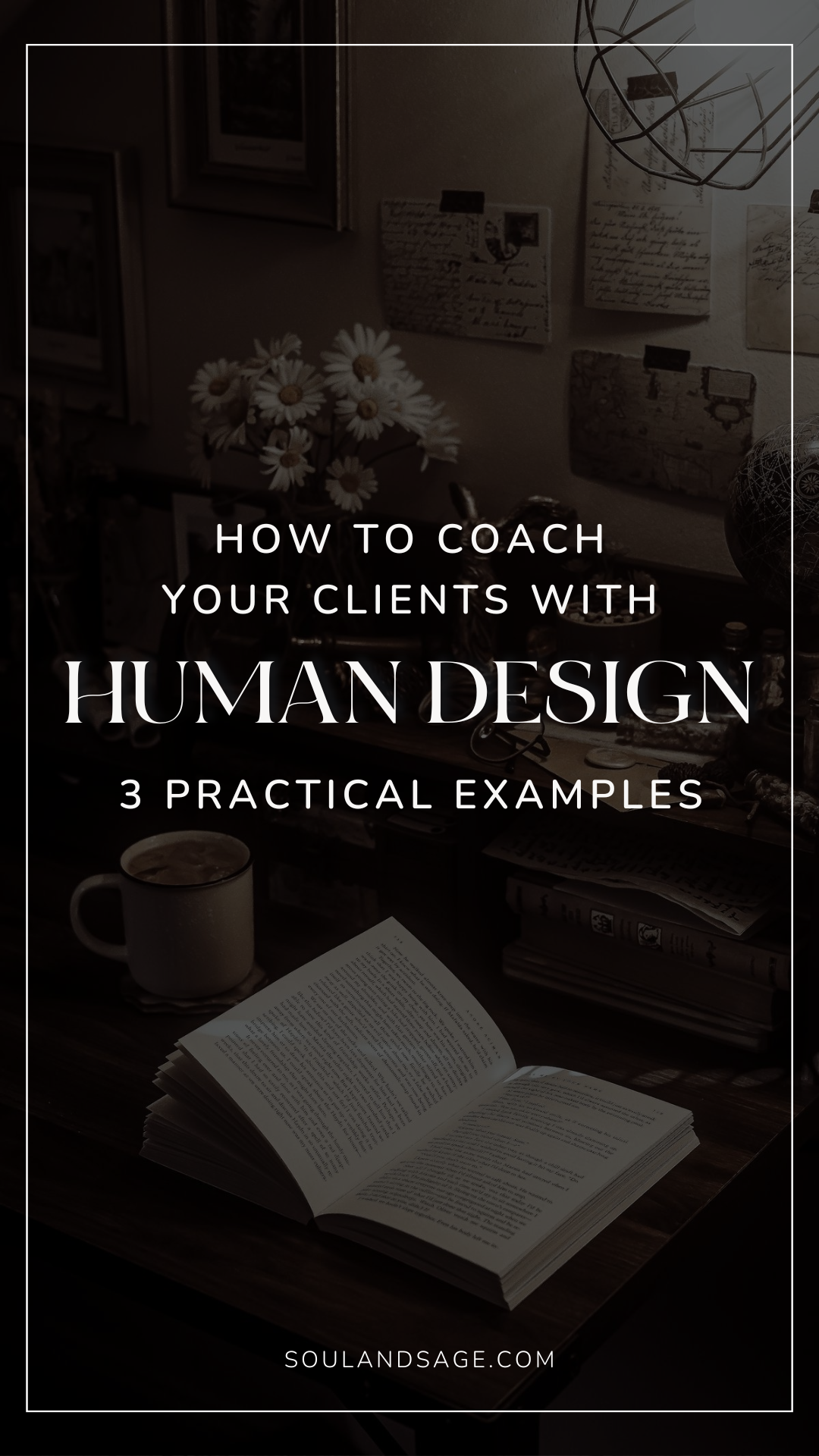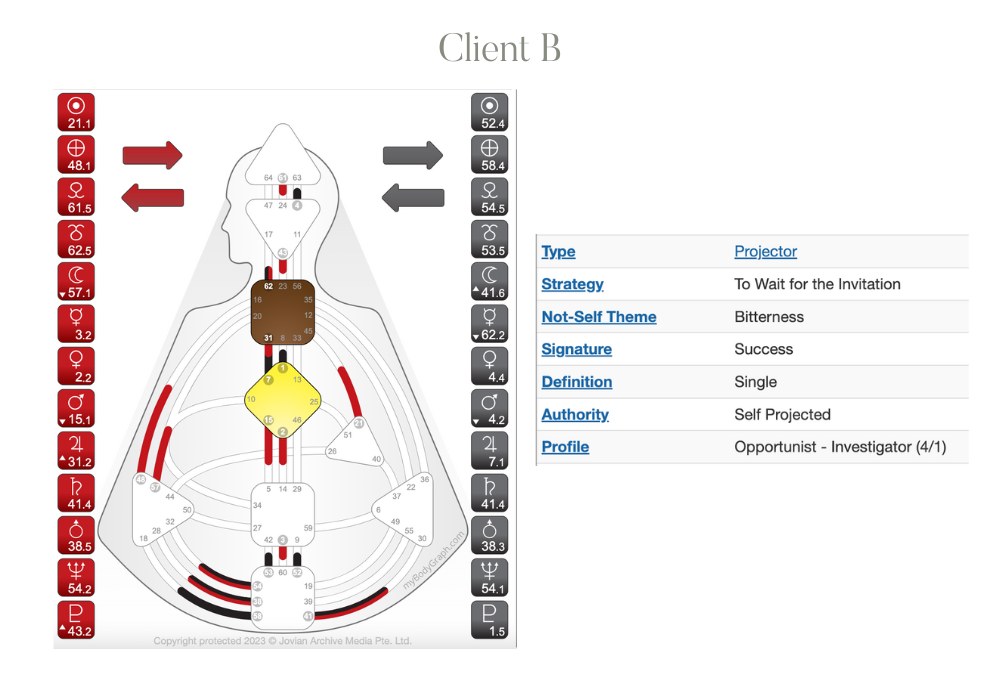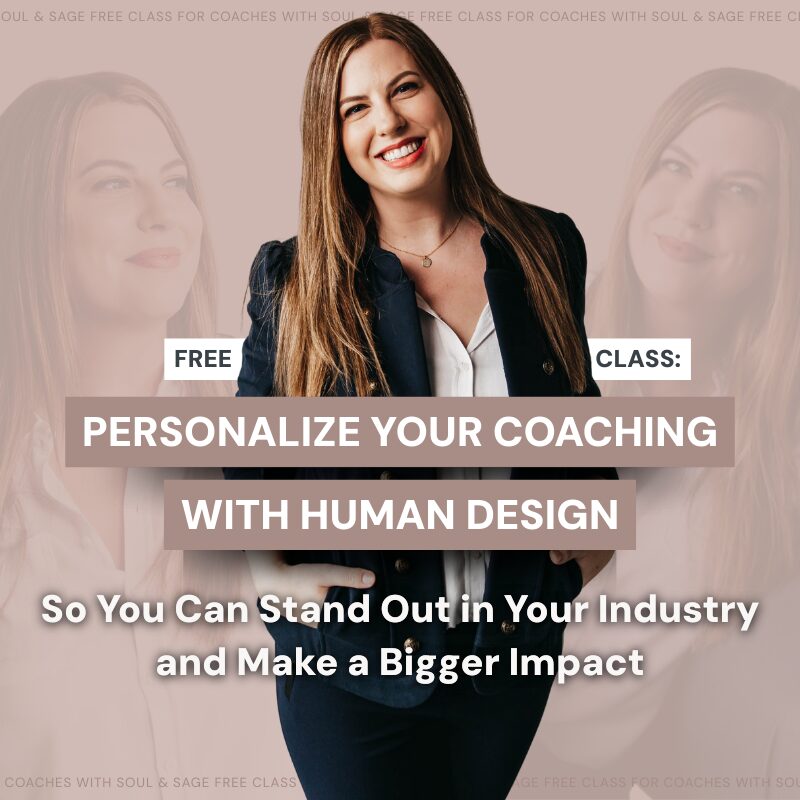Cookie-cutter coaching is out, personalized coaching experiences are in. Let’s talk about how you can use Human Design to coach your clients more powerfully, with three specific examples from real Human Design charts.

Coaching Case Studies With Human Design
Let’s say you have two new clients and their BodyGraph charts look like this:


Client A is a Generator with Emotional Authority and a 3/6 profile.
Client B is a Projector with Self Authority and a 4/1 Profile.
Here are three tangible ways you might coach these two clients differently, based on their Human Design. So that they not only enjoy the coaching experience more, but get better results while working with you, too.
#1. Decision Making
When you think about it, our entire lives are shaped by the decisions we make, both big and small. Where you end up in life and everything you experience along the way is determined by the quality of the decisions you make.
Want to help your client make decisions from an aligned and empowered place? Use their Human Design Authority to guide you.
Client A has Emotional Authority. This means that before making any big decisions, she should wait for any strong emotions to subside—positive or negative emotions, and whether those emotions are related to the decision itself or completely unrelated. If you’re comfortable with it, at this stage of the coaching process you can help your client navigate and process her emotions, or simply encourage her to wait for them to subside.
Once your client feels ‘emotionally neutral’ (aka she isn’t feeling super high or super low) she can tap into her gut “yes/no” response (stemming from her defined Sacral Center) to guide her in making the decision.
She may need to revisit something in her external environment that reminds her of the decision in order to access this gut/sacral response. For example, if she’s trying to decide whether to accept a new job opportunity and she originally received an email with the job offer, she should go back and read that email again and then feel into whether her gut is giving her a ‘yes’ or a ‘no’ in response.
Client B has Self Authority, and therefore a completely different decision-making process than Client A. What Client B really needs is a trusted sounding board to listen to her talk through the decision so she can process her thoughts about the decision verbally (ahem that’s you – you’re the sounding board!).
If this were my client, I would encourage her to walk me through all the details surrounding the decision, as well as how she’s currently thinking and feeling about it. I would avoid giving her direct advice (she doesn’t need it!), but instead focus on asking thoughtful questions that help her dig deeper into the root of the decision or problem. After talking things through out loud, there will come a point in the conversation where she has a sudden moment of clarity and just knows what the right decision is for her.
#2. Attracting Opportunities
Whether it’s a new romantic relationship, an exciting business collaboration, or a big career opportunity, the way your clients attract new opportunities into their lives will look different depending on their Human Design Type.
Client A is a Generator Type. She will attract the most aligned opportunities if she learns to trust her sacral/gut response, letting it guide her each and every move, and if she commits her time and energy to doing things that light her up. When she spends her days doing work that she loves, she becomes magnetic to her desires and will manifest the most incredible opportunities that serve to move her forward in life.
Client B is a Projector Type. For Projectors, attracting aligned opportunities comes down to two things: 1) Developing a strong sense of self-worth and knowing the value they have to give to the world, and 2) Becoming comfortable waiting for the right invitations to come their way.
For Projectors, big opportunities always come via an external invitation — whether it’s a formal invitation, like a marriage proposal, or an informal or energetic invitation, like when somebody asks them for advice or guidance.
For Client A as a Generator, your coaching might focus on helping her:
- Uncover her passions and then pursue them
- Forgo any people-pleasing tendencies and learn to say no to things/people that give her a ‘no’ in her gut
- Slowly eliminate all the ‘no’s’ that are currently in her life and add more of the ‘yes’s’
For Client B as a Projector, your coaching might include working on:
- Self-love, self-worth, and helping her recognize her value
- Identifying her zone of genius – i.e., where she’s meant to shine
- Developing patience and trust, and reminding her that if something is meant for her, it won’t pass her by
#3. Learning Style
Your client’s HD Profile gives you direct insights into their natural learning style. You can then cater your coaching recommendations, style, and resources based on how each of your clients learns best (cool, right?).
When we’re exploring learning style, we want to look at whether your client has a 1, a 2, or a 3 in their Profile. Almost everyone will have at least one of these numbers in their Profile, with the exception of those with a 4/6 Profile.
In our example, Client A has a 3/6 Profile.
Because she has a 3 (called a “3rd line” or “Line 3” in HD lingo), she learns best through the experimentation, hands-on learning, and trial and error. She’s not someone who should bury their nose in a book to learn something new; she’s better off going out, getting her hands dirty, and experiencing it firsthand.
Perhaps you give this Client homework assignments that involve hands-on learning or “real world” action and experimentation. It’s also vital to remind Clients who have a 3 in their Profile that there’s no such thing as failure, and that what we sometimes deem as “mistakes” are actually our biggest learning moments and opportunities for growth.
Client B has a 4/1 Profile.
With a 1 in her Profile, this Client does learn best through burying her nose in a book! Or at least, through exploring the topics that intrigue her via whatever method of “investigation” speaks to her most—whether that’s reading a book about a topic she’s curious about, taking a course or certification program to deepen her understanding, or even interviewing an expert in that particular field.
For Client B, you could give her a list of additional learning resources (books, blog posts, online tutorials, etc.) to aid her growth and progress. She probably loves learning and will be grateful for your extra suggestions. [Side Note: Imposter Syndrome can be a big mindset hurdle for people with a 1 in their Profile, so if this falls within your coaching domain, it might be something you tackle with a Client like this.]
Ready to stand out as a Human Design-informed coach?
In my free masterclass, I’ll walk you through my Chart-to-Client Framework™ so you can confidently integrate Human Design into your coaching practice and make a bigger impact on every single client you work with.
➡️ Watch the class for free here


Share this post: